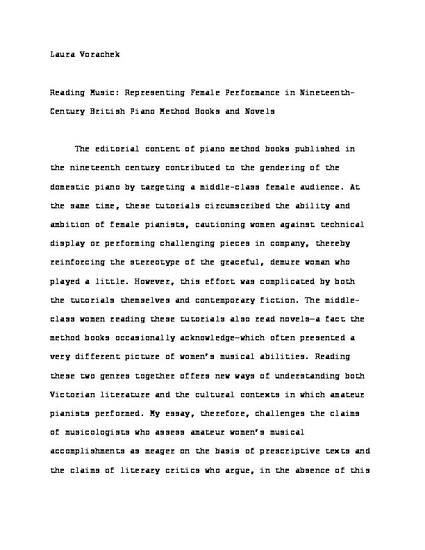
The editorial content of piano method books published in the nineteenth century contributed to the gendering of the domestic piano by targeting a middle-class female audience. At the same time, these tutorials circumscribed the ability and ambition of female pianists, cautioning women against technical display or performing challenging pieces in company, thereby reinforcing the stereotype of the graceful, demure woman who played a little. However, this effort was complicated by both the tutorials themselves and contemporary fiction. The middle-class women reading these tutorials also read novels—a fact the method books occasionally acknowledge—which often presented a very different picture of women’s musical abilities. Reading these two genres together offers new ways of understanding both Victorian literature and the cultural contexts in which amateur pianists performed. This essay, therefore, challenges the claims of musicologists who assess amateur women’s musical accomplishments as meager on the basis of prescriptive texts and the claims of literary critics who argue, in the absence of this particular contextual material, for the disciplinary function of fiction and sensation novels in particular.
- piano,
- women,
- Victorian era,
- gender roles
Available at: http://works.bepress.com/laura_vorachek/5/

This article is the author's accepted manuscript version. Some differences may exist between the accepted manuscript and the published version; as such, those wishing to quote directly from this source are advised to consult the version of record.
Permission documentation is on file.